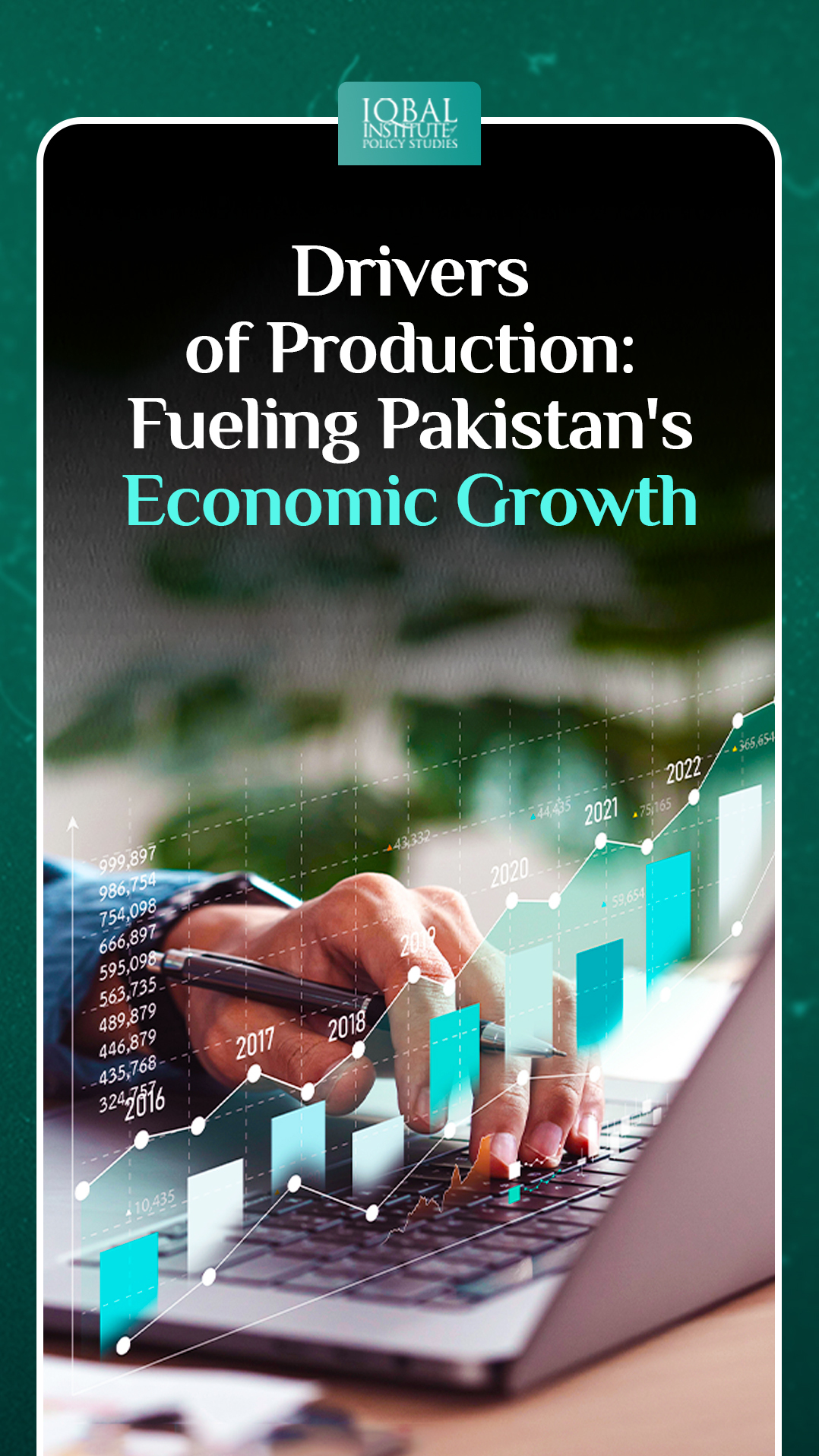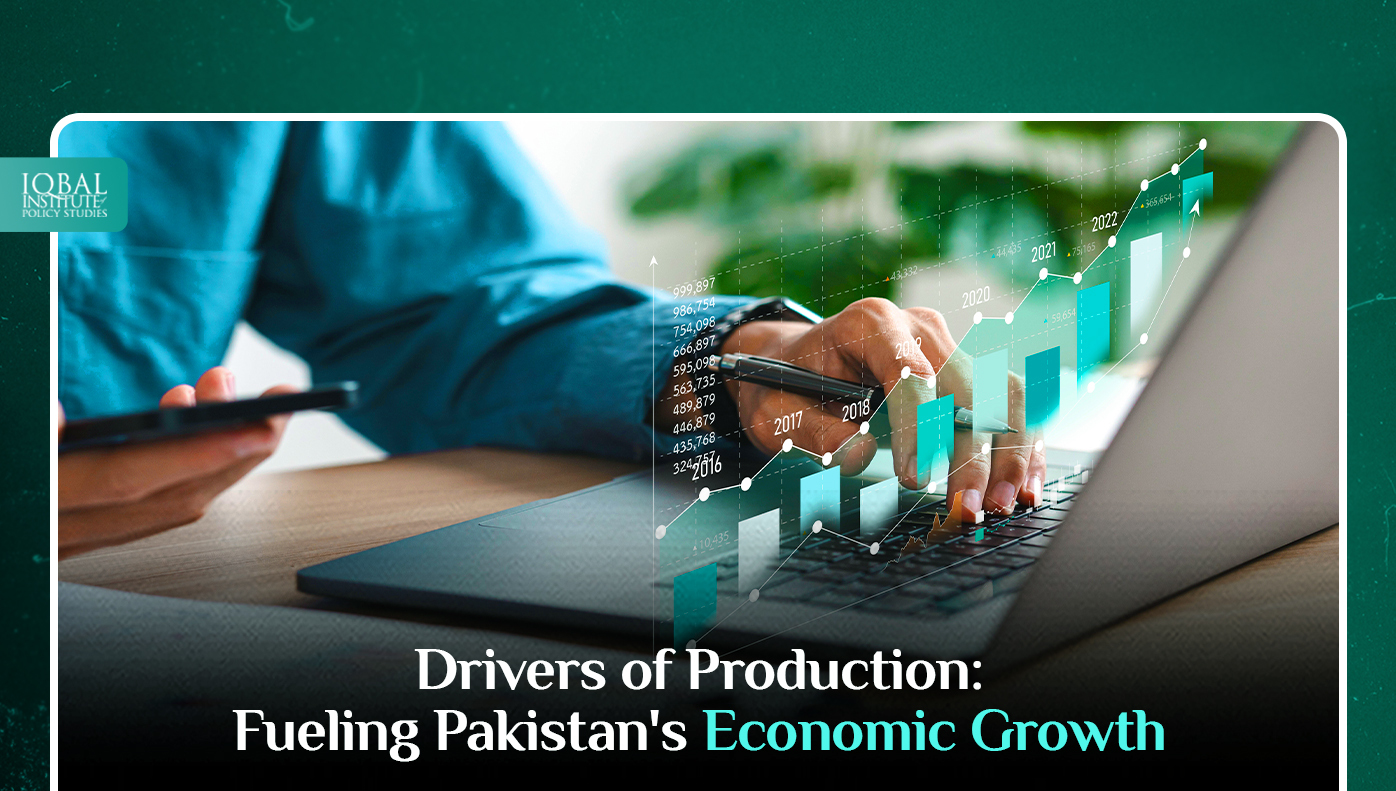Economic growth is the lifeblood of any nation, and its foundation lies in the drivers of production. For Pakistan, a nation with a complex socio-economic landscape, a deep understanding of these drivers is essential for sustainable development. These drivers encompass a multitude of factors, ranging from human capital and technological advancements to infrastructure and natural resources. In this comprehensive blog, we will delve deeply into each of these key drivers and explore their pivotal roles in propelling Pakistan’s economic growth.
Human Capital: The Cornerstone of Progress
Human capital, comprising the knowledge, skills, and abilities of a nation’s workforce, stands as a linchpin in the quest for economic growth. Pakistan’s demographic landscape is characterized by a large, youthful population, which presents both opportunities and challenges. To harness this demographic dividend effectively, investments in education, healthcare, and vocational training are imperative. A skilled and educated workforce not only boosts productivity but also acts as a magnet for foreign investments, driving economic growth.
Technological Advancements: Navigating the Digital Frontier
In today’s globalized world, technological innovation reigns supreme as a driving force behind production. Pakistan’s strides in information technology and software development exemplify the transformative power of technology. The country’s thriving software export industry showcases how embracing and adapting to new technologies can lead to increased efficiency, enhanced competitiveness, and economic diversification.
Infrastructure Development: Building the Backbone
Infrastructure development plays a pivotal role in supporting and sustaining production. Pakistan’s investments in infrastructure, such as the China-Pakistan Economic Corridor (CPEC), hold immense promise. Improved transportation networks, a stable energy supply, and robust communication systems not only reduce production costs but also open up new markets. This, in turn, fosters increased investment and drives economic growth.
Natural Resources: A Wealth to Be Harnessed Sustainably
Pakistan is endowed with abundant natural resources, including fertile land, mineral deposits, and substantial water resources. Agriculture, a cornerstone of the economy, provides livelihoods to a significant portion of the population. To fully leverage these resources, sustainable management and modernization of agriculture, along with responsible mineral resource utilization, are paramount for both economic growth and poverty reduction.
Regulatory Environment: Nurturing the Business Ecosystem
A favorable regulatory environment is essential for encouraging production and attracting investments. Pakistan has been making strides in improving its business climate, simplifying regulations, and promoting ease of doing business. Streamlining bureaucratic processes and reducing hurdles for entrepreneurs can significantly enhance the investment climate, leading to increased production and economic growth.
Access to Finance: Fueling Entrepreneurship
Access to finance, particularly for small and medium-sized enterprises (SMEs), is critical for scaling up production. Pakistan has witnessed the emergence of microfinance institutions and fintech solutions aimed at bridging the financing gap for businesses. Ensuring easier access to credit and capital for entrepreneurs can drive production and bolster economic expansion.
Global Trade: Opening New Horizons
Engaging in global trade is yet another vital driver of production. Pakistan’s strategic location provides access to regional markets, and trade agreements, such as the Pakistan-China Free Trade Agreement, have opened up avenues for expanding exports. Diversifying export products and reducing trade barriers can significantly contribute to economic growth.
Importance for Pakistan’s Economic Growth
The significance of these drivers of production for Pakistan’s economic growth cannot be overstated. Their collective impact has the potential to transform Pakistan’s economic landscape in profound ways, addressing some of the most pressing challenges the nation faces. Let’s delve deeper into the importance of these drivers for Pakistan’s economic growth:
Job Creation and Poverty Alleviation
Increased production leads to the creation of more job opportunities across various sectors of the economy. A higher level of employment reduces unemployment rates and helps alleviate poverty, a critical issue in Pakistan.
Income Generation and Improved Living Standards
A growing economy generates higher income levels for individuals and households. Increased income leads to improved living standards, with families being able to afford better housing, healthcare, education, and overall quality of life.
Reduced Dependence on Aid and Grants
A self-sustaining economy reduces Pakistan’s reliance on foreign aid and grants. Economic independence enhances the country’s sovereignty and self-determination, allowing it to pursue its development goals with greater autonomy.
Investor Confidence and Foreign Direct Investment
A conducive environment for production and business activities attracts both domestic and foreign investors. Increased investor confidence can lead to higher levels of foreign direct investment (FDI), injecting capital and expertise into the economy.
Global Competitiveness
Leveraging technology and a skilled workforce enhances Pakistan’s competitiveness in the global market. A competitive edge in industries such as IT services and manufacturing can result in increased exports and economic stability.
Economic Diversification
Focusing on multiple drivers of production, such as agriculture, manufacturing, and services, can diversify the economy. Economic diversification reduces vulnerability to external shocks and economic instability, making Pakistan more resilient.
Enhanced Resilience to External Shocks
A diversified economy with robust production capabilities is better equipped to withstand external shocks, such as economic downturns or global crises. A resilient economy is more capable of adapting to changing circumstances and maintaining steady growth.
Improved Infrastructure and Quality of Life
Infrastructure development not only supports production but also improves the overall quality of life for citizens. Reliable transportation networks, efficient energy supply, and advanced communication systems make daily life easier and enhance productivity.
Environmental Sustainability
Sustainable management of natural resources and responsible production practices are critical for long-term economic growth. Prioritizing environmental sustainability ensures that Pakistan’s growth is not at the expense of its natural heritage and future generations.
Access to Healthcare and Education
Economic growth can lead to increased public spending on healthcare and education, further enhancing human capital. Improved access to healthcare and education services contributes to a healthier and more educated workforce, boosting productivity.
Conclusion
In conclusion, Pakistan’s economic growth hinges on recognizing, nurturing, and optimizing these essential drivers of production. Their interplay not only leads to higher productivity but also creates a pathway toward a more prosperous and sustainable future for the nation. Pakistan’s journey towards economic growth is a multifaceted endeavor, requiring a comprehensive approach that addresses the complexities of its socio-economic landscape.
This article is written by Radma Nouman. Radma is a research analyst at the Iqbal Institute of Policy Studies (IIPS).



Leave a Reply